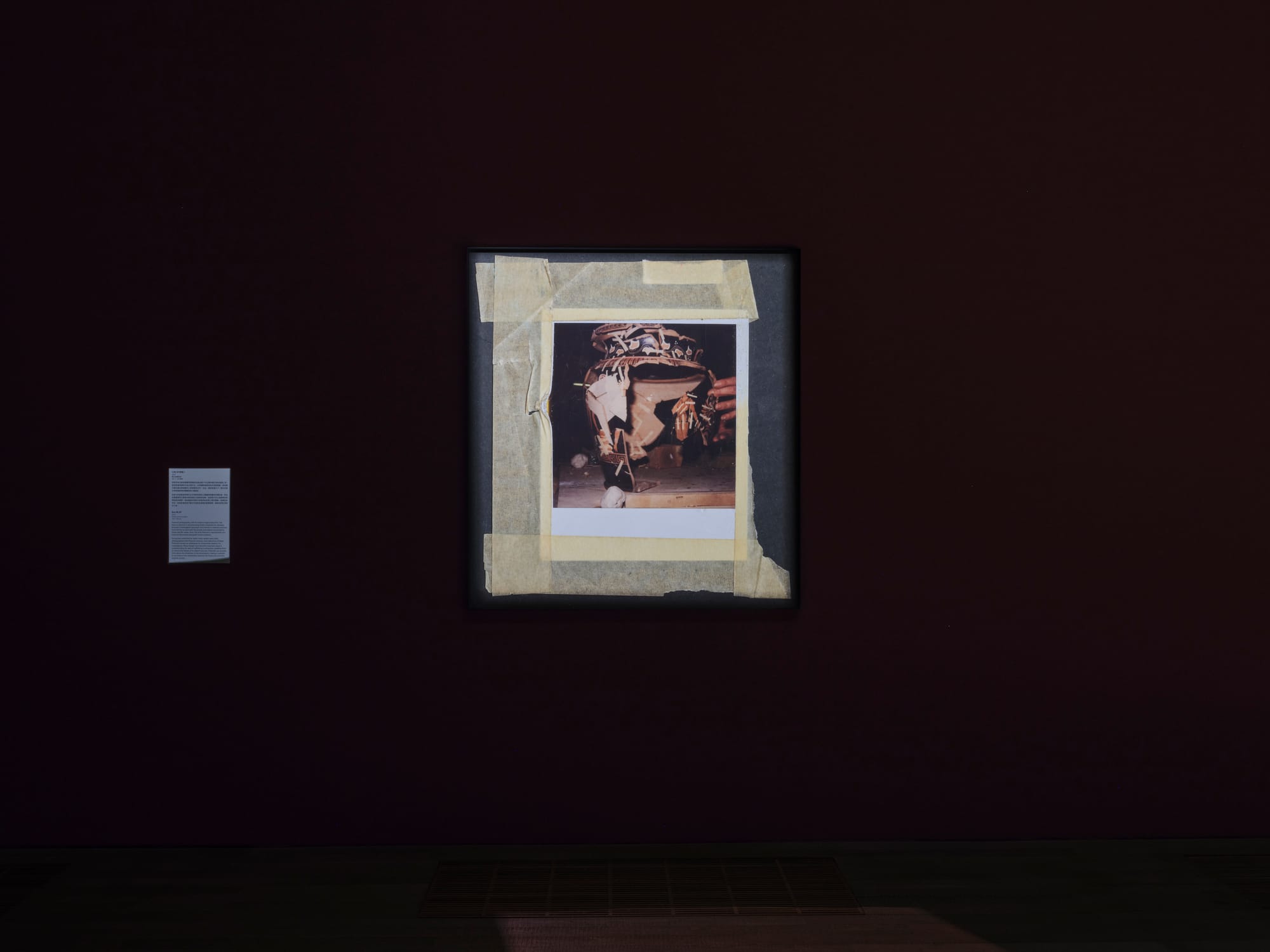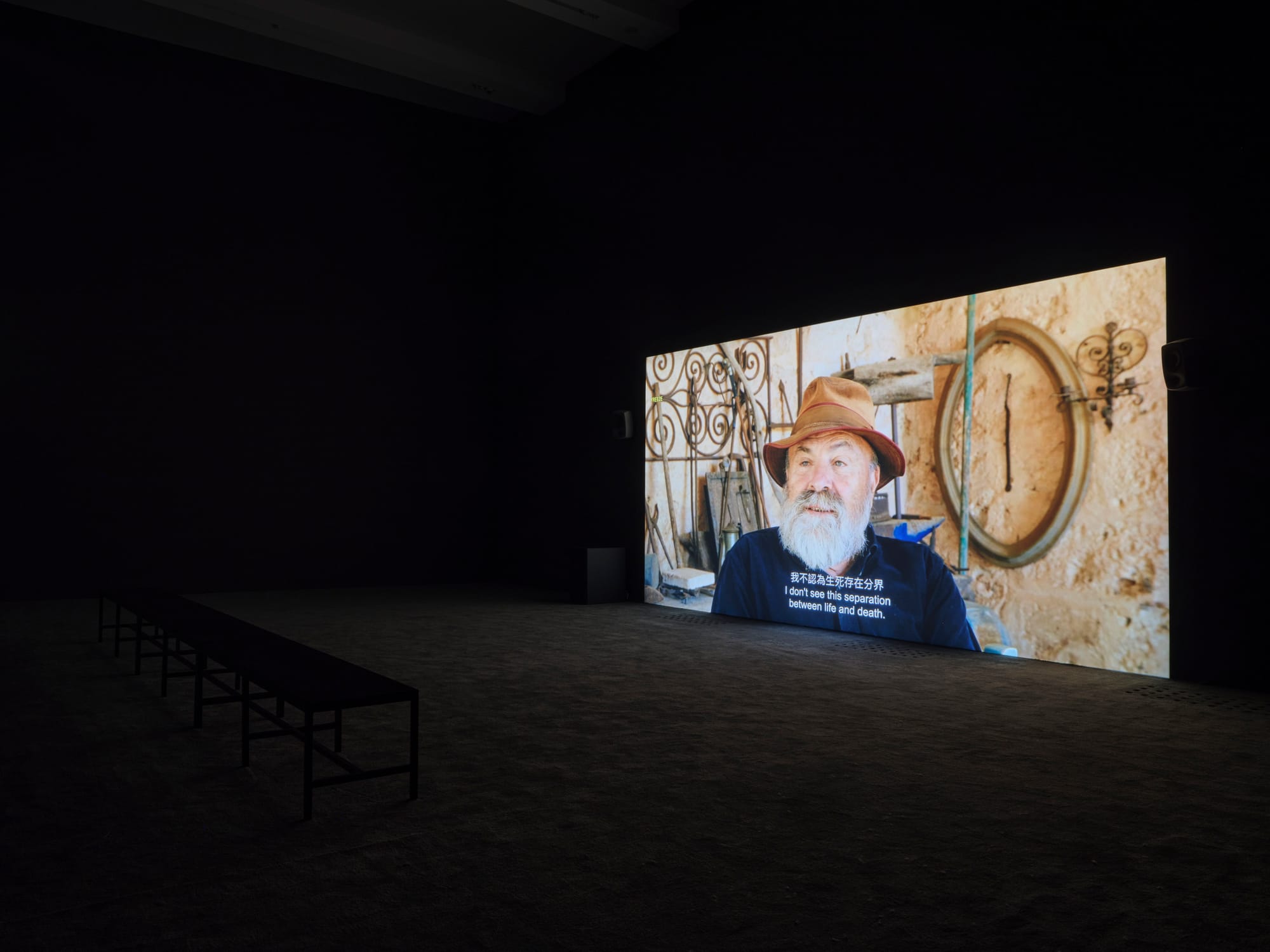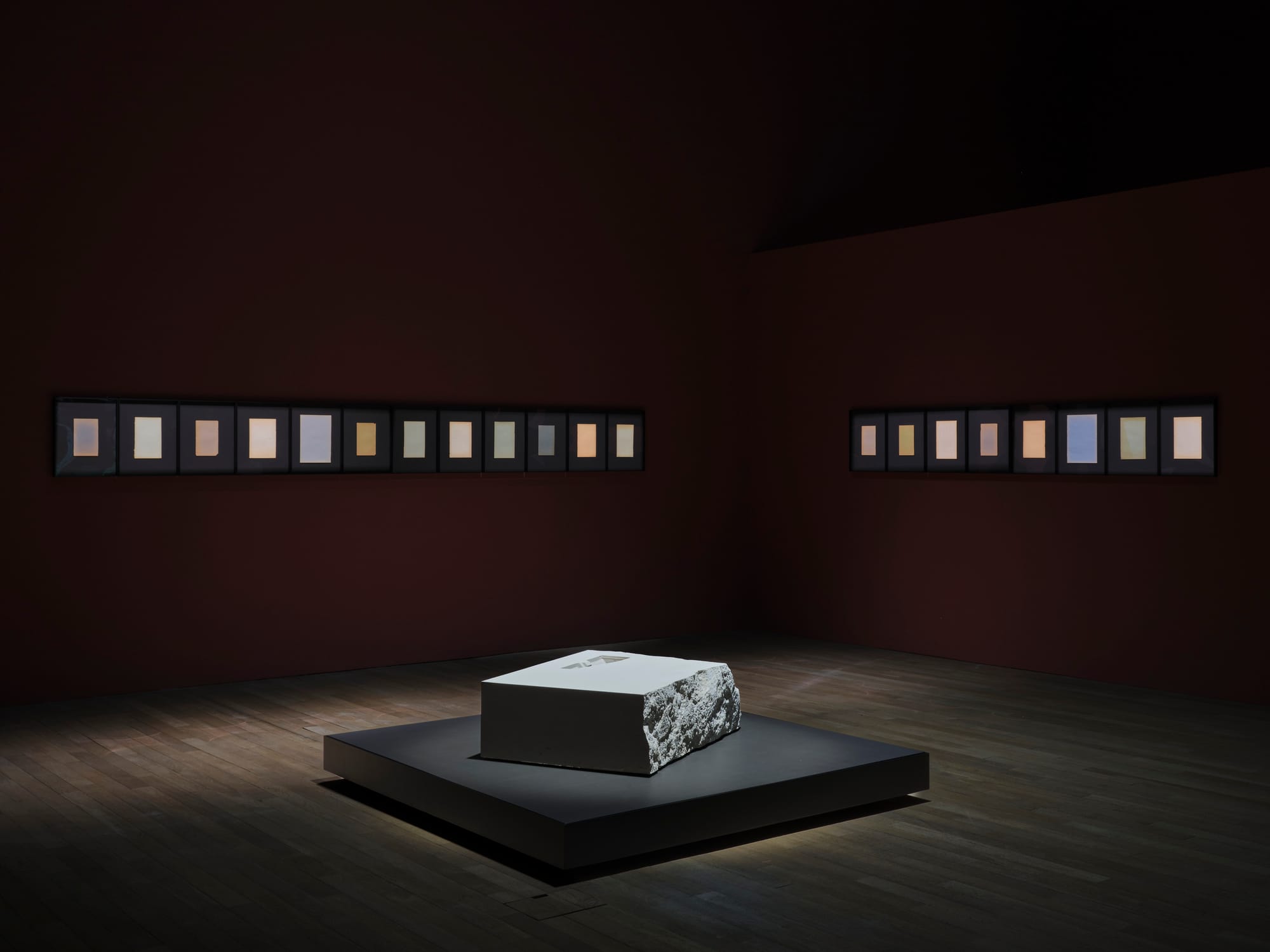Shows
Maeve Brennan’s “Records”

Maeve Brennan
Records
JC Contemporary, Tai Kwun
Hong Kong
Mar 21–Jun 8, 2025
Entering Maeve Brennan's solo show, “Records,” felt like stepping backstage—visitors passed through heavy, dark-red curtains, leaving behind JC Contemporary’s iconic spiral staircase and bright third floor landing to enter another realm. In the first darkened gallery, a film loomed on the wall, the consecutive frames of an analog reel illuminated by a whirring projector. Titled Staged Fragments (2022), it shows a hand pointing and gesturing to a partially reconstituted ancient Greek vase. There is no sound; the object is mute. The intentional silence continued around the corner: a row of paper sheets, faded and blank – also mute – lined the gallery wall. Before them, on a low pedestal, a pristine off-white slab of limestone imprinted with the interior of a car’s glove compartment references a fatal car crash in Rome in 1995. The work, titled Box 29_01 (2022), references how investigation of the car wreckage revealed a stack of polaroid photographs depicting ancient artefacts. The posthumous search of the driver’s apartment exposed an extensive antiquities trafficking ring, which led to its eventual crackdown. In this exhibition, the illicit trading of antiquities took center stage.

A large photograph of one such polaroid, portraying a patched Greek vase, represents another quiet analog relic, one that can contain hints to help retrace its trafficking journey. The print introduced the next piece, audible in the background: another film, Brennan’s go-to medium and the heart of the show. In An Excavation (2022), the looted object is finally given a voice. The film, like a documentary, shows Greek forensic archeologist Christos Tsirogiannis and Aarhus University Museum director Vinnie Norskov unboxing the remnants of a 2,500-year-old Greek vessel plundered from Southern Italy. Their delicate unpacking of the painted terracotta shards is accompanied by Tsirogiannis calmly explaining that the act of looting robs the objects of their voice due to the loss of the context they were extricated from. He describes his job as a reconstruction of two puzzles at once: the object itself, and its trajectory since the looting. Close-ups of the handling of the pieces emphasize their physicality. Norskov lucidly verbalizes that her hands touching the artefact are a reminder of who else has held it in the past – the potter, the painter, the plunderer…

“Records” culminated in another film, Siticulosa (2025), which zooms into the South Italian soil that still shelters innumerable antiquities—and their thieves. Introducing local specialists performing niche and seemingly small professions (farmers, art historians, geologists, speleologists, and more), the artist honors their profound knowledge about the land, its history, and culture, as well as their roles as de facto guardians of our global heritage. Importantly, quotes from tomb raiders appear on the screen, giving them a voice too—humanizing them, while admitting their deep (and possibly best) knowledge of ancient civilizations. In a documentational yet spiritual tone, Siticulosa unites the artefacts’ true advocates.

With its thoughtful curation, "Records" was easily digestible despite its manifold layers. Like an archaeologist digging deeper and deeper underground, visitors navigated from the mute museum artefact, to the chorus of people who study and safeguard its protective ground, to those who brutally extract it. Spectacularly illuminated wall labels—light boxes that attracted visitors like a flame does a moth—led the way, enlightening readers with clear explanations, guiding them through the metaphorical (underground trafficking) tunnel.
Brennan's exhibition at JC Contemporary was the young British artist’s first show in Asia. While her work is not explicitly related to this part of the world, the topics covered—the looting itself, and the ecosystems of repair it entails—also affect many heritage sites across Asia, throughout history and in the present. Furthermore, Brennan’s work constituted a shrewd critique of Western institutions who have paraded as guardians of cultural heritage for centuries while simultaneously being the market for and repository of illicitly trafficked antiquities. In only seven quietly powerful, poetic works, the show was more than memorable.
Dr Christina Bartosch is an art historian, author, and collections manager based in Hong Kong.







